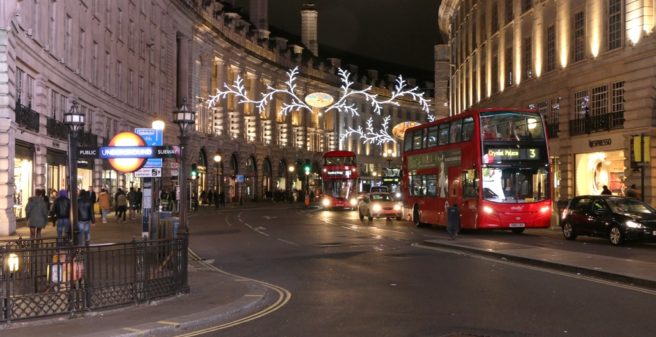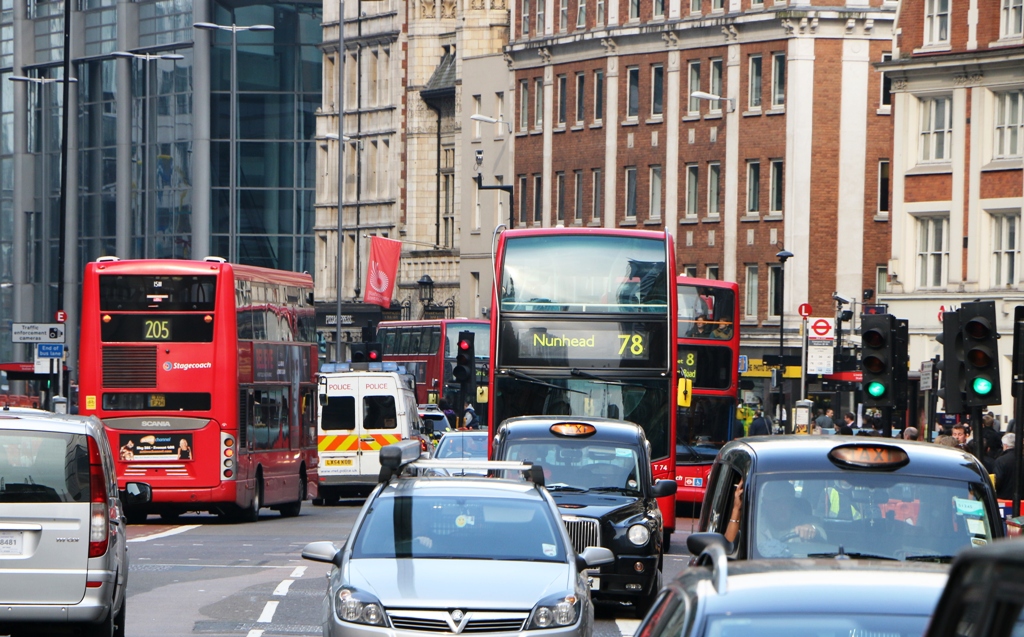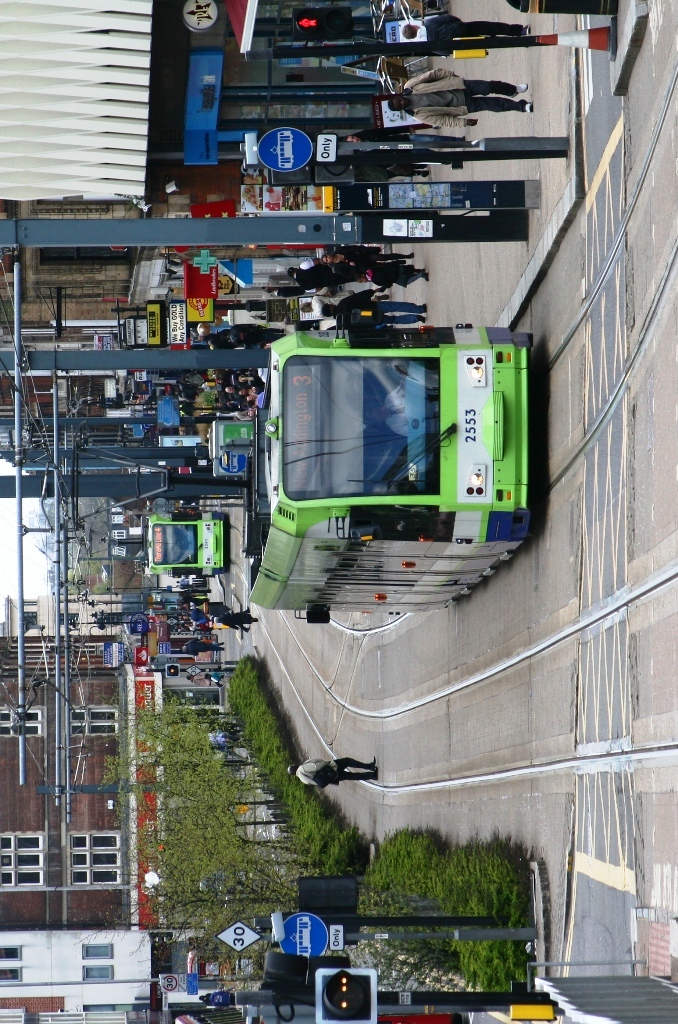
Most sectors were hit extremely hard by the COVID-19 pandemic, but none more so than retail. The British high street all but closed down across the country for at least six months of 2020. With that came a turbo-charged shift towards online shopping, a habit that’s proving hard to kick. As the world now adjusts to a new way of living post COVID-19, can the transport industry help reinvigorate traditional shopping or has the world of retail transaction irreversibly changed forever? Martin Howell, Transport Market Director at Worldline, discusses how the retail sector and the transport industry should work together to actively highlight physical experiences and embrace new technologies driven by customer intelligence in a way which is both cost efficient and beneficial to the end user.
This isn’t a new problem
Long before the COVID-19 pandemic darkened all of our doors in early 2020 there had already been a seismic shift in the way we travelled to shop – not to mention the change in shopping habits to be more online and less in person over the past two decades. Major high street stores such as BHS, Woolworths, and Dixons had already been lost across the country, while others merged, re-located, re-branded, or sought refuge online. Once a staple of weekend routine, the modern British high street had found itself lacking footfall and therefore commercial revenue. But why had those people stopped visiting?
The obvious answer is the increase in functionality and accessibility to online shopping, but more than that there are wider cultural considerations. Part of the reason is undoubtedly the often-disjointed transport networks and payment systems that help deliver people to the high street. Another key reason for the change in habit that we’ve seen is the rise of the ‘out of town’ retail shopping park.
An American concept, retail parks are generally located out of city centres and more conveniently situated for motorways and therefore car travel than passenger transport. This works well in the US where people are happier to drive everywhere, and the UK has definitely followed suit to some degree.
A decline that started with physically moving the high street for convenience, was then exacerbated by a changing market. The millennial generation has been brought up in a world where everything they require can be easy and instant, available in a few clicks of online shopping. These are the people that retail needs to attract, so as online convenience has thrived, the high street has struggled to keep pace – even before COVID-19. Some high street shops have embraced the rise of experiential shopping, such as John Lewis, where physical locations may not necessarily be to drive purchases, but instead to educate customers, get advice from sales staff, or simply see items in real life before committing to purchase. This approach works well across all generations of customers as people can shop in a way that suits their needs specifically.
Of course, it wasn’t bad news for all across the high street and retail sectors. Many start-ups and new businesses have been born and continue to prosper in this new digital economy. But what it has created is a shared issue between the retail sector and the transport sector – a lack of travelling and purchasing customers on our high streets.
As we transition into a new post-COVID-19 phase, how can the transport sector reinvent itself and at the same time support retail in realising a similar journey? The fundamental aspect is all about understanding the new audience and ensuring that both transport and retail deliver what they actually need from a service, not what we think they want.

Behavioural change
In order to address the change, we must first understand the new behaviour. Undoubtedly, one of the biggest behavioural shifts we’ve seen as a result of COVID-19 is the decline in cash usage and the increase in contactless and mobile payments [1]. This is a change that transcends the high street and retail in general, and that is a key aspect of transport and Mobility-as-a-Service (MaaS), as well as many other sectors.
The convenience of card payments and apps on mobile phones for payment eliminates the need to carry multiple items to complete one action. People don’t need to find change for the bus or get change to add up in a store. Everything is handled efficiently in one click or swipe.
So then if efficiency is one key behavioural change, what are the others? A fundamental difference has been the shift from ‘retail purchase’ to ‘retail experience’. Just as COVID-19 changed patterns around purchasing, it also changed the way we interact with others. Self-isolation and restricted movement for much of 2020 created a real public desire for connection with others through travel and in-person interactions. When meeting people in person, we enjoy actively participating in activities that allow us to spend quality time with one another. As a result, we’ve seen a rise in retail units being converted to eateries, adventure locations or leisure pursuits, such as bowling or mini golf. People are looking for social outlets in their retail experiences as much as they are looking for ways to shop and spend.
Apple were perhaps ahead of the curve with this [2]. Instead of their stores focusing on retail sales, some years ago they introduced workshops. This shifted the emphasis away from a transaction that could be done online, to a learning or educational experience that was better suited to real life, thus bringing people back in to stores. In some cases these aren’t even their stores. If real sustained change is to be achieved, retail on the high street will have to look to further capitalise on this shift and create city centres full of experiential immersive activities.
The transport to get those people to and from those experiences then needs to also consider the same behavioural change. Simplicity in terms of single easy transactions and end-to-end mobility will be vital, but there is also an argument for transport itself becoming more experiential. The introduction of more robust wifi facilities, better and more comfortable seating, and greater options for sustenance are all ways of making that happen. It requires a fully joined up approach between MaaS partners, the government, and the retail sector to make this happen, in a way which seems complimentary. Working to create ease of access through simply-understood, accessible and digital-driven payment systems for public transport will help to drive footfall; in retail and the high street.
Environmental considerations
Through industry data and public surveys [3], we know what people want for the future of transport and retail, some of which is covered above. But there are other wider considerations that will also need action. Addressing unsustainable overcrowding and high levels of air pollution in our cities has been topical debate over the last decade. It something that has made some progress with the introduction of pedestrianisation and Ultra Low Emission Zones (ULEZ). However, more will need to be done to bring about a change in public perception.
As we enter a greener and environmentally informed era, public transport will play a vital role in making cities more accessible, connected and carbon neutral. People on the whole aren’t against public transport or visiting cities for retail. It is just that it has to work for them and they need reassurance that it’s being done sustainably, so they can play their part in creating a better greener future for the next generation.
New, MaaS driven public transport promises to reconnect areas that have been neglected, largely rural or outlying towns and villages. Using Mobility-as-a-Service (MaaS), public transport goes beyond just taking a bus or train to a set location. Connecting multiple forms of public transport under one system means journeys are easier to plan and take, without the hassle of paper tickets or pocket change. This promotes natural movement, which is what retail, transactional or experiential, requires.

Allowing passengers greater freedom to choose travel options opens up possibilities for retail as a by-product. Cities have the potential for less congestion as people can commute easily, and get around using buses, bikes, and trams. Some cities can then look to introduce or extend pedestrianised zones, which promote continental style outdoor eating for people to take advantage of the new cleaner air zones.
It’s not just restricted to cities. Local high streets can also revive thanks to frequent, integrated and easy-to-use public transport methods that include rural areas, allowing everyone the opportunity to travel without the expense and environmental impact of private transport.
Changing mindsets and working together
Clearly the most difficult step is actually changing mindsets towards public transport, as well as creating an infrastructure that can accommodate the flexible needs of more connected customers. If this can be achieved, this in turn supports the retail sector which is on a similar journey.
What is crucial is that these two things, transport and retail, do not operate in complete isolation with change as we move forward, and that both sectors share customer insight and learning that will help the development of a long-term sustainable future for all.
Worldline, as experts in MaaS and digital payment services, can offer unique insight into audience profiling, travel scenarios, and outline how it’s possible for authorities to help facilitate change.
MaaS supports the high street
Delivering public transport that is cleaner, safer, greener and more efficient is essential to get people back to the high street. MaaS is powered by innovation, digitalisation, automation and connectivity offers huge opportunities for this.
By welcoming innovations into the market, we are introducing smart, sustainable and multimodal mobility. Transport operators have a real opportunity to do more for their customers and meet the demand for a bespoke service, starting with how they design and develop smart ticketing schemes.
As enablers of MaaS services, including digital payments, Worldline has already delivered many of the benefits that these systems require. Customers are ready to move again, and the high street is slowly changing. Getting both the retail and transport propositions right, to bring prosperity is possible, but it involves everyone working together. Complete mobility, including efficient, low-cost, green travel for all will deliver an engaged audience for the new high street.
[1] https://www.ft.com/content/c4c39abc-93b2-46f5-a731-9dd95840b841
[2] https://www.retailwire.com/discussion/target-doubles-down-on-apple-shop-in-shop-experiences/
[3] https://www.gov.uk/government/publications/future-of-transport-deliberative-research
25.11.2021
